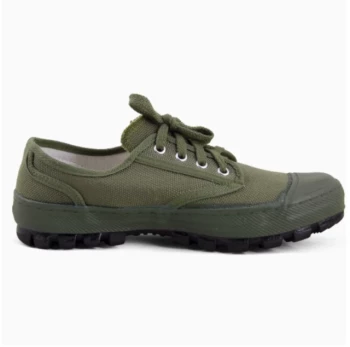When it comes to optimizing walking performance, most people focus on distance, speed, or technique—but rarely consider their shoes’ consistency. Research shows that wearing the same shoe design reinforces muscle memory, reduces injury risk, and improves efficiency. Here’s how biomechanics and footwear design work together to shape your training outcomes.
Why Your Muscles Prefer Consistency in Walking Shoes
Your body thrives on predictability. Repeated movements in consistent footwear allow muscles, tendons, and joints to adapt to specific support structures and sole geometries. This adaptation leads to:
- Efficient energy transfer: A 2021 study found walkers in consistent shoes required less oxygen expenditure over time, as their gait patterns became optimized.
- Reduced microtrauma: Varying shoe designs force slight adjustments in stride, increasing strain on stabilizer muscles.
- Faster recovery: Familiar cushioning and arch support reduce post-activity fatigue.
"Think of your shoes as a dance partner—the longer you work together, the more seamlessly you move."
How Shoe Design Shapes Biomechanical Adaptation
Not all shoes are created equal. Key design elements directly influence how your body adapts:
1. Midsole Density
Firmer midsoles promote stronger foot strike engagement, while softer ones encourage lighter steps. Switching between extremes disrupts muscle activation patterns.
2. Heel-to-Toe Drop
A 6mm drop (common in walking shoes) tilts the pelvis slightly forward. Changing to a zero-drop shoe abruptly alters spinal alignment.
3. Tread Pattern
Consistent outsole grip ensures reliable ground feedback. Irregular treads can destabilize ankle joints over uneven terrain.
Pro Tip: If transitioning to a new shoe, overlap usage gradually over 3–4 weeks to let muscles adjust.
The Hidden Cost of Rotating Shoe Brands
While variety might seem appealing, frequent shoe rotation can lead to:
- Muscle confusion: Like suddenly changing a tennis racket’s weight, altered shoe specs force recalibration, delaying progress.
- Performance plateaus: Inconsistent footwear prevents the nervous system from fully automating efficient movement patterns.
- Increased injury risk: A 2019 meta-analysis linked rotating shoe types to higher rates of plantar fasciitis and shin splints.
Choosing the Right Brand for Long-Term Training Success
For distributors and bulk buyers, selecting a manufacturer with design consistency is critical. Look for:
Key Features in a Reliable Walking Shoe
- Uniform last shape: Ensures identical toe box and arch dimensions across production batches.
- Stable material blends: Ethylene-vinyl acetate (EVA) foam retains density longer than polyurethane.
- Moderate flexibility: A balance between rigidity and bend prevents gait disruption.
Expert Tips for Maintaining Adaptation Benefits
- Stock multiple pairs of the same model: Rotate identical shoes to extend lifespan without altering biomechanics.
- Monitor wear patterns: Replace shoes after ~500 miles, as degraded midsoles lose consistency.
- Prioritize fit over trends: A snug heel and roomy toe box matter more than aesthetics.
Step Into Consistency with 3515 Footwear
For bulk buyers and distributors, 3515 delivers rigorously tested footwear with uniform designs to support long-term biomechanical adaptation. Our production expertise ensures every pair meets the precise specifications your clients’ muscles expect—season after season.
Ready to equip your customers with shoes that build performance, not confusion? Explore 3515’s range today.
Final Note: The right shoe isn’t just about comfort—it’s a tool for teaching your body to move smarter. Whether you’re a walker, retailer, or fitness professional, consistency is the silent ally of progress.
Related Products
- Factory-Direct Wholesale Canvas Boots with High-Traction Rubber Soles
- Wholesale Durable Camo Canvas Shoes with High-Traction Rubber Soles
- Durable High-Traction Canvas Sneakers Wholesale & Custom Manufacturing
- Durable Rubber Sole Outdoor Shoes Wholesale & Custom Manufacturing
- Durable Canvas Work Shoes with Rubber Lug Sole | Wholesale Manufacturer
Related Articles
- How to Choose Work Boot Uppers That Match Your Job's Demands
- How Vulcanized Soles Balance Style and Performance for Skateboarders
- How Vulcanized Rubber Engineering Creates Unbeatable Outdoor Boots
- How Vulcanized Rubber Work Boots Outlast Alternatives – And When to Choose Differently
- Why Vulcanized Soles Outlast: The Science Behind Durable Footwear



















